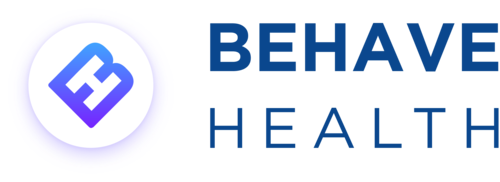Medicaid in Tennessee is called TennCare. According to a recent study, well over 65% of all addiction treatment centers in Tennessee accept Medicaid. That number is growing about .1% every year, with a total of 297 facilities treating SUD in Tennessee.
Medicaid Billing for Addiction Treatment in Arizona
4 Reasons Your Addiction Treatment Organization is Still Clinging to a Legacy EHR
Got Noise? How Noisy Charts are Hurting Your Addiction Treatment Center's Bottom Line
It’s no secret that addiction treatment clinicians are overwhelmed by the demands of clinical documentation.
They are “bogged down in paperwork,” even if that “paperwork” is mostly virtual.
Behavioral health professionals face some of the harshest clinical documentation requirements of any healthcare provider and they are often grappling with EHRs and clinical software that is outdated, ill-suited to the work, or simply non-existent.
Behavioral health is naturally complex. The addiction treatment community’s emphasis on the biopsychosocial model means that every episode of care generates reams of patient data, SOAP notes, test results, clinical measures, patient reporting, care coordination documentation, and more.
When poorly managed, patient data collected over the course of a single episode of care can become essentially incomprehensible. In these cases, it’s hard to tell the signal from the noise.
Charts like these are called “noisy charts.”
What is a noisy chart?
A “noisy chart” is simply a chart with data that feels chaotic. It’s a chart that has too much “noise” competing for attention with the intended signal. It’s hard to read and hard to interpret. Working with noisy charts is aggravating, frustrating and inefficient.
Think of it like a crowded, noisy room. You’re trying to communicate with another clinician, colleague or insurance payer about an important patient matter but there’s so many other irrelevant noises happening in the background that you give up. Or maybe you keep trying to communicate but as you struggle to understand one another, mistakes are made.
In addiction treatment, a “noisy chart” is usually comprised of some of the following common ingredients:
Roughly 567 copy-and-paste SOAP notes
943 pages of patient reported information, collected in a valiant attempt to deliver “patient-centered care,” never read
230 random bits of PHI collected “just in case” but never used in any clinical sense
1,563 “record update notifications” collecting robotically in an inbox
Clinically important information that resists timely, easy surfacing
Data that refuses to be tamed by existing filters or sort systems
Haphazardly entered data that does not allow for apples-to-apples comparison or analysis
Why Do Some Addiction Treatment EHRs or Patient Records Become Noisy?
There are several causes of “noisy charts.”
Occasionally, a wordy clinician is the cause of bloated, unwieldy charts. This, however, is the exception to the rule - most clinicians are too busy to waste time writing epic notes.
More often, it’s the software design itself that inadvertently cultivates an ideal environment for “noise.”
While some clinical noise is inevitable, as you learn more about EHR design and optimization, you’ll find that smart design and smart use goes a long way to cutting through the chatter.
But first, let’s look at the top three consequences of noisy charts: damaged outcome measurements, staff burnout and attrition, and impaired care coordination.
Noisy Charts Damage Outcome Measurements and Make Value-Based Care Impossible
Your addiction treatment organization may be collecting patient data, but if it can’t be used to improve patient care, establish medical necessity, or track patient outcomes and treatment success, it’s not going to be very useful.
As value-based care continues to loom on the horizon for the behavioral health industry, smart addiction treatment executives are choosing EHRs that can handle outcomes measurements. Documenting the “value” that treatment providers payers and patients can be difficult or impossible in a chaotic, “noisy” EHR environment.
Noisy Charts Pour Gasoline on Your Addiction Treatment Organization’s Staffing Crisis
If your addiction treatment organization is having difficulty recruiting and retaining talented clinicians on your team, you’re not alone. Demand continues to skyrocket for behavioral health care in the wake of the pandemic as well as the surge in dangerous new drugs like fentanyl and P2P meth. As treatment becomes more complicated and demanding, clinician burnout also continues to rise. This combination of high patient demand and low treatment availability puts extra pressure on the system, leaving very few qualified professionals to accomplish urgently needed work.
As with most problems, prevention is the smartest strategy. Instead of focusing on how to replace staff members lost to an ever-increasing rate of clinician attrition, why not focus on how to keep your existing staff in their roles as long as possible?
If pay raises and other bonuses are off the table, what can you do to provide your clinicians with a more satisfying work experience?
The secret to fostering a healthy and happy work environment is equipping your teams with the tools they need to get the job done well. One of the main tools that addiction treatment clinicians use day in and day out is their EHR - if they have access to one, that is.
Just implementing any EHR and hoping for the best is unlikely to result in a happier staff. In fact, invest in the wrong system and watch as clinicians run screaming for the door.
Yes, the frustration level can be that bad.
Noisy Charts Cripple Addiction Treatment Care Coordination
When your charts are difficult to digest, interoperability - that easy flow of electronic information - suffers. When clinician communication is restricted, care coordination becomes clunky and disjointed, resulting in shoddy, redundant treatment and mistake-prone patient care.
Sometimes, nothing matters as much as your patient’s latest UA results. Other times, that group counseling note that contains vital information about relapse warning signs is the most important, life-saving update your team will receive all day.
In a chaotic, noisy chart, these pieces of information don’t surface easily and when they do, it’s at the wrong time or the wrong place or both. The result? Balls get dropped. The “golden thread” or clinical narrative is broken. Need-to-know information isn’t passed on or it’s surrounded by so much irrelevant information that it’s overlooked.
An EHR Designed Especially for Addiction Treatment to Quiet the Noise
Behave Health is committed to making it easier - and more profitable - to operate evidence-based, results-focused addiction treatment centers.
Our all-in-one app puts clinical, administration, staff, admissions, alumni, residents, treatment plans, billing, insurance authorizations and more - all at your fingertips.
Get your free trial started today and see why more addiction treatment centers prefer Behave Health.
PS. Just getting started with behavioral health? Need help with certification, too? Behave Health can also help direct you to the right resources for help with Licensing or Accreditation by either The Joint Commission or CARF. Mention to your product specialist that you’re interested in this service after you start your free trial!
Understanding the EMR Needs of Christian Recovery and Rehab Centers
What's the Top EMR System for Behavioral Health and Addiction Treatment in 2023?
Where Can I Find Addiction Treatment Utilization Forms for Premera Blue Cross?
Understanding CareSource Management Group's Shareable Client Information Policies for Addiction Treatment
How to Handle Utilization Reviews with Blue Shield of California for Addiction Treatment
While they’ve done things like make nominal financial contributions to the cause of diversifying the mental healthcare profession, Blue Shield of California is part of a general trend in managed care to minimize costs for insurers by limiting the scope of “medical necessity,” especially when it comes to addiction treatment.
How to Find the Right Billing Claims Address for Addiction Treatment Patients with Cigna Health Insurance
What Anthem Inc's Level of Care Denial Rates Mean for Your Addiction Treatment Center's Billing Department
Opening an Addiction Treatment Center in Maryland? Here’s How.
Missouri is a Great State for Opening Your Next Addiction Treatment Center
Thinking of Opening an Addiction Treatment Center in Indiana? Here’s How.
Here’s What it Takes to Open an Addiction Treatment Center in Tennessee
Thinking of Opening an Addiction Treatment Center in Washington? Here’s What You Need to Know.
Is It Time to Outsource Your Addiction Treatment Medical Billing?
Opening an Addiction Treatment Center in Texas? Here's What You Need to Know
Read on for Behave Health’s step-by-step information about how to open an addiction treatment or drug rehab center in the Lone Star State.






